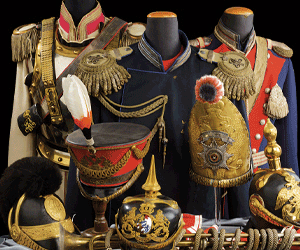Firefighters 2nd Pattern Officer Collar Tabs
SKU: 74.GOR.03.02.02.02.001
Estimated market value:

Estimated market value:
Attributes
History
Before the NSDAP’s rise to power in 1933, firefighters and their regulations were overseen by the individual German states. Fire services were more or less run by the communities as they saw fit. Larger towns and cities featured professional fire services (Berufsfeuerwehr), while rural areas featured volunteer fire services (Freiwillige Feuerwehr).
Under Third Reich rule, fire services were to be unified on a national level and therefore placed under the control of the German Police. National socialist doctrine was infused and the fire services militarised in preparation for war and the anticipated bombing of German cities.
Between 1933 and 1938, the professional fire service was referred to as “Feuerlöschpolizei” (fire extinguishing police), while between 1938 and 1945, they were referred to as “Feuerschutzpolizei” (fire protection police) as a subdivision of the German Police.
Volunteer firefighters were classified as part of the Hilfspolizei (police auxiliary forces).
Firefighter uniforms had generally been made of dark blue material, predominantly in Prussia. This colour was still used during the 1930s, but then changed in 1939 when members of the professional fire service received a green uniform similar to that of the German Police. The uniform garments featured carmine piping and initially black, later dark brown (as of September 1942) collars, cuffs, and cap bands as identifiers. However, volunteer firefighters kept wearing dark blue uniforms with carmine piping until the end of the war.
Firefighter collar tabs were used to indicate rank groups rather than individual ranks. There are two main patterns.
The first pattern was used in the early and mid 1930s.
Officers wore collar tabs with silver-coloured embroidered “Litzen” (bars) with silver-coloured centre cords. They featured black backing for professional fire service members and carmine backing for volunteer firefighters.
Enlisted Ranks collar tabs were plain black with carmine piping for professional fire service members and carmine with black piping for volunteer firefighters. These collar tabs were blank if worn in combination with shoulder boards, however, if no shoulder boards were worn, rank pips and unit numbers, where applicable, were transferred to the collar tabs.
The second pattern was introduced sometime in the mid to late 1930s.
The collar tabs for Officers were very similar as those of the first pattern, except all were in carmine. The difference between professional fire service members and volunteers was that the former wore collar tabs featuring silver-coloured piping. This was discontinued in 1943.
Collar tabs for Enlisted Ranks featured “Litzen” as well, however, they were more basic and plain compared to the more detailed and pronounced “Litzen” worn by Officers. The Enlisted “Litzen” feature red centre stripes and are in grey for the lowest ranks and in matte silver for the higher Enlisted Ranks.


Comments
Sign in to comment and reply.


Scroll Top